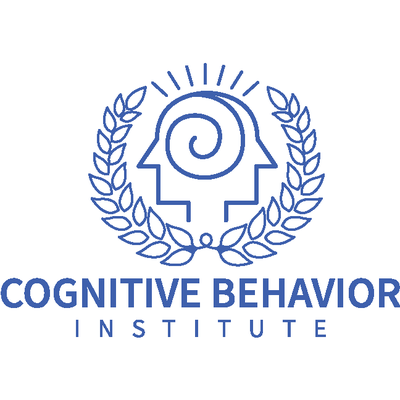 Seasonal Affective Disorder (SAD) is a form of depression that is linked to seasonal changes. It typically begins and ends at the same time each year.
Seasonal Affective Disorder (SAD) is a form of depression that is linked to seasonal changes. It typically begins and ends at the same time each year.
Most people with SAD start experiencing symptoms in the fall, which continue into the winter months, draining their energy and causing moodiness. These symptoms often alleviate during the spring and summer months.
In some cases, SAD can cause depression in the spring or early summer, which then resolves during the fall or winter months.
At Cognitive Behavior Institute, we recognize the profound effect SAD can have on a person's well-being and daily life. Our team of skilled therapists and psychiatrists collaborates closely with each client to develop a customized treatment plan that targets their specific needs.
It’s important not to dismiss these yearly feelings as just “winter blues” or a seasonal funk that you have to endure on your own. Instead, take steps to maintain your mood and motivation steady throughout the year.
Symptoms and Causes of Seasonal Affective Disorder (SAD)
The symptoms of SAD can vary depending on the time of year and the individual. Here are some more detailed symptoms associated with SAD:
General Symptoms
Telepsychiatry, with its unique blend of convenience an
- Feeling sad most of the day.
- Lack of interest in usual activities.
- Feeling tired often.
- Sleep problems, like sleeping too much or not enough.
- Cravings for foods high in carbohydrates lead to weight gain.
- Trouble focusing.
- Feelings of hopelessness or guilt.
- In serious cases, thoughts of ending one's life.
Fall and Winter SAD
Symptoms specific to winter-onset SAD, sometimes called winter depression, may include:
- Sleeping more than usual.
- Eating more foods high in carbohydrates.
- Gaining weight.
- Feeling very tired.
Spring and Summer SAD
Symptoms specific to summer-onset seasonal affective disorder, sometimes called summer depression, may include:
- Problems falling asleep.
- Eating less than usual.
- Losing weight.
- Feeling nervous or jumpy.
- Getting irritated easily.
Causes
The exact reason why people get SAD is not clear. However, some factors might play a role:
- Sunlight and Biological Clock: Less sunlight might change our body’s internal clock. This can make us feel out of step with our normal day-to-day routine.
- Brain Chemicals: Sunlight affects brain chemicals like serotonin that help us feel good. With less sun, these chemicals might get out of balance and lead to feelings of sadness.
- Vitamin D: Sunlight helps our bodies make vitamin D, which boosts our mood. Less sunlight might mean less vitamin D, affecting how we feel.
- Melatonin: This chemical affects our sleep and mood. Less sunlight might make our bodies produce more melatonin, making us feel sleepy or fatigued.
- Thoughts About Winter: Some people feel stressed or negative about winter. It’s not clear whether this causes SAD or is a result of it.
Risk Factors
Certain factors may increase your risk of SAD. These include:
- Family history: Individuals with a family history of depression or SAD have a higher risk of developing the condition.
- Gender: Women are at a four times greater risk of experiencing SAD compared to men.
- Age: SAD often manifests between the ages of 18 and 30.
- Geographical location: In Pittsburgh, PA, the winter days are short, causing those with traditional 9-5 jobs to often commute in darkness. This reduces their sunlight exposure, which can disrupt circadian rhythms and potentially trigger SAD symptoms.
If you feel these symptoms, it’s good to talk to a healthcare expert. They can help understand and manage the condition.
Treatments for Seasonal Affective Disorder (SAD)
The treatment varies based on symptom severity and patient preferences. Here are some common treatments:
- Cognitive Behavioral Therapy (CBT): A specific kind of talk therapy, CBT helps people with SAD identify negative thought patterns and behaviors, replacing them with positive ones. It's a structured approach requiring active participation and can effectively reduce the distress caused by seasonal changes over time.
- Light Therapy: This treatment requires sitting near a device emitting bright light, mimicking natural sunlight, usually in the morning. It helps adjust your body's internal clock and improves mood, countering the effects of reduced daylight hours in winter.
- Talk Therapy: Talking to a mental health expert can help you understand and change negative thoughts and behaviors related to SAD. They provide strategies to cope better with stress and manage symptoms effectively, offering a supportive way to talk through feelings and challenges.
- Medication: Doctors sometimes prescribe antidepressants like bupropion for SAD. These medications work by increasing serotonin levels in the brain, which can boost mood and help alleviate symptoms of depression. It's important for medication to be supervised by a healthcare professional.
These treatments can be used alone or in combination, depending on the individual’s needs and preferences. Some lifestyle changes, such as getting enough sleep, exercising regularly, eating a balanced diet, and staying socially connected, can also help prevent or reduce the symptoms of SAD.
Evidence-Based SAD Treatment in Pittsburgh
Seasonal Affective Disorder (SAD) is more than just a case of “winter blues.” It’s a significant condition that impacts numerous individuals each year. However, recognizing the symptoms, causes, and risk factors is the initial step towards managing and overcoming it.
With professional support, such as that offered by the Cognitive Behavior Institute, individuals can navigate these seasonal changes more effectively. The presence of various treatment options ensures that everyone can find an approach that suits them to maintain their mental well-being throughout the year.
If you or a loved one are experiencing symptoms of SAD, don't hesitate.Reach out to theCognitive Behavior Institute or another trusted mental health professional today, and start your journey towards brighter, more balanced days ahead.

